From: Robert Lee Hogg LCDR/USN (Retired)
To: CAPT Jiancarlo Villa
Commanding Officer, Patrol Squadron Eight
Hangar 511 Yorktown Ave
Jacksonville, FL 32212
Subj: Historic significance of P2V-5F Bureau Number 131410 in Patriot Park
Enclosure: DVD Containing historic records and stories of 131410’s influence on my life.
This is a letter that I have been meaning to write, ever since I saw a picture taken by my VP-8 Crew 11 Aviation Technician (Circa 1955-60). Ralph Papa is now the VP-8 Alumni Association’s Historian. He had taken and published excellent photo coverage of your change of command. Amongst the pictures, was one of BuNo 131410. The BuNo seemed familiar, so I looked it up in my log book. Much to my amazement, I had logged over 800 hours in that aircraft during my tour with VP-8. It was an unusual tour.
I served with VP-8 from October 1956 to August 1960. Initially I was assigned as “Logs & Records Officer”. A three months, they realized that my BSME education from the NROTC Scholarship at Illinois Institute of Technology could be better utilized in the Maintenance Dept. I was re-assigned as “Assistant Maintenance Officer”. I never left maintenance after that. Most of the tour was spent as “Avionics Officer”. As you shall see in this letter, that worked out well!

VP8 LC5 BiNo 131410 cir. 1958 / Now at NAS Jacksonville
The significance of BuNo 131410 to VP-8’s history is that it was the first plane and crew that started using “Explosive Echo Ranging” (EER) to detect submarines! With the use of EER, our simulated PDC attacks got more accurate. On occasion, submarine commanders were surprised! PDC’s that had landed on the upper structure of a shallow running submarine would explode when they dove to depths lower the PDC’s detonation settings. When our accuracy in attacking submarines during training exercises got back to CNO, VP-8 was assigned CNO Project FL/E151/J15-11 “Conduct a limited evaluation of the interim explosive echo ranging system (EER).” Under this project, we continued to develop tactics and equipment requirements to advance our ASW capability. Later, the project got the name “Julie” after an engineer at the Naval Air Development Center, Warminster PA, noted that a Philadelphia night club stripper named, “Julie Gibson “also made “Passive Boys Active” (think buoys). The name seemed appropriate and it stuck!
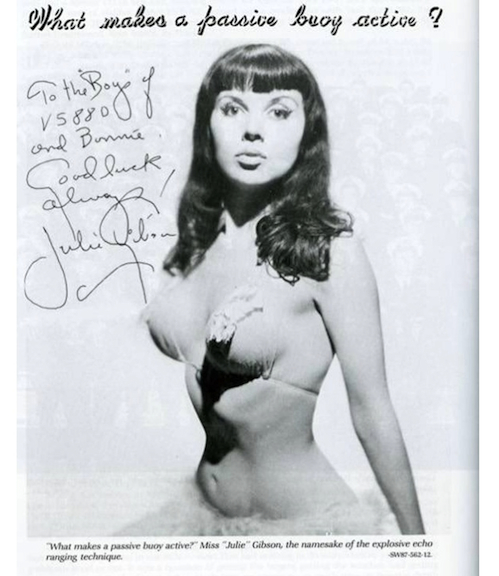
I still have still have the original maintenance manual for the recorder we bought in Providence, RI (circa 1957) .
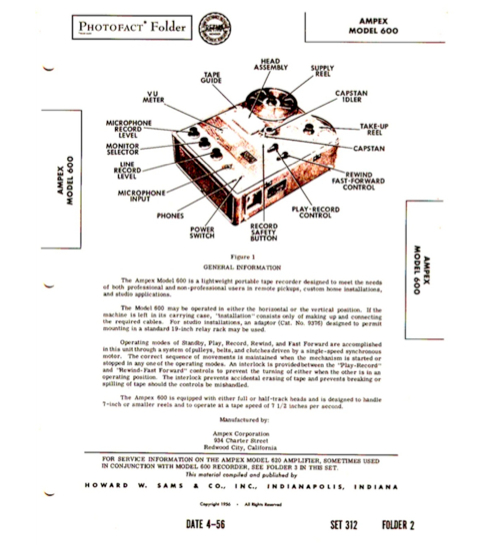
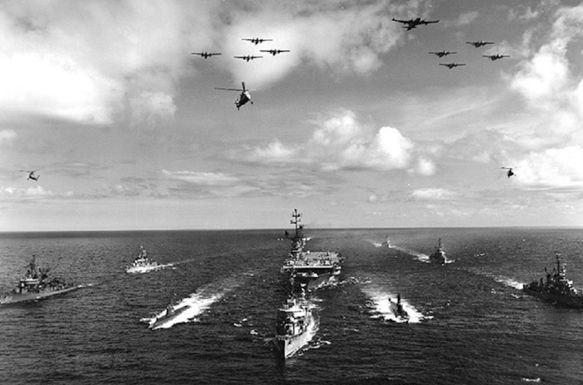
Task Group Alfa
It consisted of the aircraft carrier, USS Valley Forge and several destroyers and a couple submarines. VP-8 was assigned for land based ASW support. This presented a problem for VP-8. They were soon to depart on a split deployment to Argentia and Port Lyautey, Morocco.
At this time, VP-8 had only two aircraft equipped and processing the “Julie’ Project. I think that the second aircraft was BuNo 131528. LT Keith Sharer (later LCDR) was the PPC of the second aircraft. Since RADM Thach was mainly interested in the “Julie “crews, it was decided to break off a two plane detachment for assignment to TGA. This cause some discontent with the other ten crews, but it was the only solution. The rest of the squadron made the six month split deployment. On 10 May 1958, the “Julie” detachment was assigned under LCDR Keith W. Sharer as O-in-C to permanently move to NAS Chincoteague, VA. The rest of the squadron was to follow after their deployment. Chincoteague was an interesting place. Other units were developing a radio controlled Regulus Missile for drone target practice. Another project was an Airborne Pick-Up of downed pilots, using bungee cords! The testing was done using live pigs! They really squealed, when the bungee cord broke!
The Officer’s Club was great, if you loved oysters! More details of our activities at Chincoteague are on the DVD.
Under Project “Julie” we traveled to many places. We spent a day with famed, Dr. Hersey at the Woods Hole Underwater Research Center to get information on sound ray paths underwater and the influence of temperature, pressure, salinity and depth of hydrophone. He told us about “shadow zones” and how variable depth hydrophones could see into them. We left with an arm full of Propagation Charts. They were good for later presentations. The information was used to generate new specifications for new sonobuoys procurements. When new models were proposed for production, we helped VX-1 at NAS Key West test them. There were several different types with deep arrays, multiple hydrophones, etc. We took several trips to NAS Roosevelt Roads and Port au Prince, Jamaica for deep water EER tests. The net results were a big acceleration in the development of sonobuoys, including pinging buoys! I don’t think much early progress would have been made without the early efforts of the “Julie” Project. We burnt up a lot of sonobuoys, the military/industrial complex became very interested when big budgets were allocated for development. Sanders and Magnavox were big players.
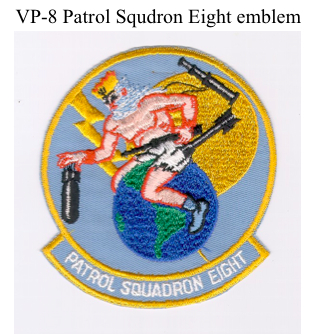 |
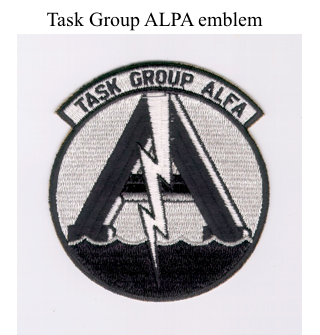 |
|---|
There was a disastrous day for Magnavox. VP-8 had been assign to drop a pattern of about 50 large, deep hydrophone experimental buoys. They were to gather statistical performance data. I asked them how close a pattern they wanted. They said to put them all together, as close as possible. So we made several round trips from shore with 10 buoys each trip. They were dropped on a heading and time from a mark on top of their support ship. The pattern was about 500 feet in diameter. They were happy with it! Next morning we returned with a load of replacement buoys for the ones that had failed. As we approached, it was hard to believe what had happened! After we left the day before, the engineers had tied red streams (about 30’ long) to each buoy. The combination of the difference in current movement at the hydrophone depth and the surface had cause a twisting motion of the buoy pattern. The result was a big tangled mess. All the buoys were tied up in a big heap; the middle was about ten feet up in the air. I am sure they had a lot of explaning to do, when they got back to the factory. Their only remark to me was “We don’t think we will need any replacements today!”
Another amusing incident occurred later after we had gotten our P2V-5Fs JULIE/JEZEBEL equipped aircraft. We were working with TGA and there was an RADM Deuterman (?) onboard the Valley Forge. He was quite interested in the capability of the new equipment. So he asked if there was anything he could do that would help us find their “exercise attack submarine”? We told him that there was so much noise in the water near the Task Group that it was hard to get a signal. He said that he could have them all lock down their propeller shafts for five minutes, maximum. Any longer would require that the safety valves dump steam! We said, “Ok, let’s try it”. After a couple minutes we started to get a signature. He inquired. “How are you doing?” We answered, “Need a little more time.” He said, “Can’t stay shut down much longer”. About that time immediately ahead of us, a periscope popped up. We triggered a smoke light and advised him, “Mark on top your submarine!” He congratulated us on a job “Well done”. No one ever knew that we just lucked out. Obviously, the sub commander got curious about the silence and wanted to know what had happened to the fleet and couldn’t resist taking a look! In the early phase of project “Julie” I took on four tasks that contributed a lot to our success.
First;
When CNO provided us with the first AN/ASA-13 Navigational Computer Group (DRT Plotter) they also shipped one to VX-6, which shared our hanger at Quonset. I was a friend of their Avionics Officer. He advised me that they would be unable to install their ASA-13 before they deployed to New Zealand in support of the Antarctica Exploration team. So, if I wanted it, I could have it! I didn’t waste a second before I had all the ASA-13 boxed components in our shop. We installed the system in a second aircraft, now we had two “Julie” crews. Our first ASA-13 was commercially installed. They had simply mounted it on top of our Navigation Table. It made it so high that it was nearly un-usable! Then I mounted both the DRT Plotters into the Navigation Tables, such that they were at level working surface, once again!
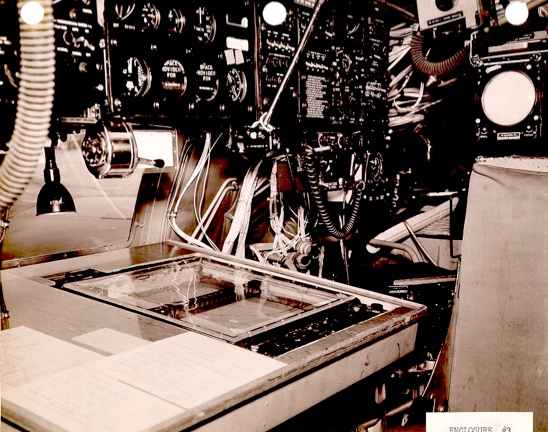
Second;
The ASQ-8 Recorder had two speeds of paper travel and a readout face of only about 8”. We needed a longer face, so I designed and built two clip-on attachments that extended the face length to16”. I wrote up the simple design and presented it to Fleet Air Wing Five.
They forwarded it to the other squadrons so that they could build their own.
Third;
After missing the target and listening to our attack signal PDC’s return echoes with considerable delay times, we realized that significant information could be obtained thru “Off-Set bombing”. The target was on an ellipse with foci at the buoy and the point of PDC drop.
The problem was how to plot the measured information. You can’t do it with just dividers and a straight edge! Something else would be needed. We were at Chincoteague, when I decided to try replacing the needles in my divider with a couple of big medical needles (not the “so called” square ones used to give shots). Then I threaded a piece of fishing line through the needles. One end was tied permanently; the other could be adjusted depending on the echo time delay. Put the needle points on the chart over the buoy and bombing point, stretch the line taunt with your pencil and draw the ellipse! Now we could use off-set bombing and get readouts from two buoys simultaneously. Plotting the two ellipses gave us two possible locations.
Forth;
Soon after we had installed the DRT Tables, we received two RO-28/UNH-6 Militarized Magnetic Tape Recorders.
They were installed on the portside behind the lift up door to the bow station. All the controls for operating the unit were on the front of the recorder. Due to its location, this was very inconvenient! So I designed and built a control box from spare parts that we had for other systems. It was mounted on the right side of the navigator’s instrument panel. We produced some very good mission tapes by using the controller. Later, I documented the design and submitted it the Chief, Bureau of Aeronautics. I had hopes that they would fund the production of a commercial product. That would enable everyone to use the recorder more effectively. They applauded our effort, but denied funding, based on the efforts in progress to configure the next upgrade of the P2V-5F to a JULIE/JEZEBEL model. I found a copy of this report in my files. It is included on the DVD.
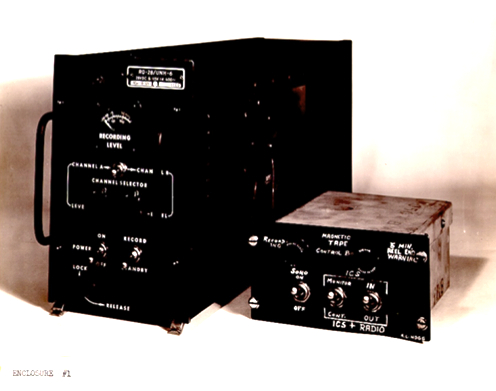
Another interesting event during my career in VP-8 was an agreement that Capt Nasworthy asked me to make. In our era, it was much different that in yours (an understatement!). The four year tour was spent, 2 years as Navigator, 1 year as co-pilot and last year as PPC. VP-8 had won the coveted, “E” for Excellence the previous year. He very much wanted to win a second one, (which we did!). Since I had so much experience in exercising the “Julie” tactics operations (now days the position would be called a “TACCO”), he proposed that I voluntarily spend a third year in that function. In exchange, he promised to make sure that I made all my P3P, P2P an PPC designations in a timely manner and that when we received our new “Julie/Jezebel” aircraft, I could have first pick of the planes and move immediately up to PPC with my own crew! I thoroughly enjoyed the “TACCO” job, so I agreed and he kept his promise. We won our second “E” that year!
Speaking of aircraft model changes. when I reported to VP-8 at NAS Quonset Point, RI in October 1956, they were flying P2V-5F’s. I always thought they were rather ugly, with the large 750 gal wing tip tanks. Then in June of 1957 we switched to new aircraft (including BuNo 131410) with the streamlined 350 gal tip tanks, a much better configuration. In April 1959, the P2V-5s (JULIE/JEZEBEL configuration) models arrived. It was a much better plane. It had a bubble cockpit window and a DRT plotter in the center of the instrument panel, just ahead of the lever controls. I don’t think the cockpit plotter was used very much by the pilots, it should have been!
All of the P2V’s had large “Beaver Tail” flap sections. In the days of cheap whiskey in Argentia, seldom did an aircraft return from there without the “Beaver Tails” full of cases of illegal whiskey. The custom officer at Quonset was pretty lenient; he never managed to find and whiskey aboard, as long as he happened to find a quart of “Johnny Walker Red Label” on his car seat when he left. Things were pretty loose in those days!
After all the maintenance and engineering work at VP-8, I decided to apply for a Master’s Degree program at the Naval Postgraduate School (NPS), Monterey, CA. I was accepted and departed VP-8 in August 1960. I was very fortunate to arrive at the NPS about the time they received the world’s first “Fully Transistorized Computer”. It was a Control Data Corporation Model 1604 Computer (Serial #1). I was one of six students assigned to work on the computer. I ended up spending many hours in that computer room during the next three years. I had learned everything about that computer that was within my capability. One of my professors gave me a nice “Letter of Commendation” when I graduated!
My thesis partner and I installed a satellite 160 model Control Data Computer on the sixth floor above the main computer room. It was covert for about six months, until we got caught! I wrote my thesis on “Control System Programming, Remote computing and Data Display” This was in 1963, pretty early to be computing on a remote site! Perhaps as important to me as the MSEE degree, was a friend I made. Often, at night, students taking computer courses would come to the computer center for help. I was usually the only one around and enjoyed helping them. One student was, LCDR J. Rogers Farrell, I often helped understand his programming and ran them for him, late at night. Significantly, he arrived at the NAVAIRSYSCOM (NASC) shortly after me in 1970. He was to be the new P3C Update Program Manager (PMA-240). His job was the total management of the project, both hardware and software. When he saw that I was assigned to NASC as the ASW Tactical Support Center (TSC) Program Officer, he called me to his office. He informed me that he had no idea how to manage the P3C Update software development and ask if I would consider taking on the job? I told him “Nothing could make me happier!” It solved all my problems of coordinating the data transfer and support between the P3C and the TSC. I told him “if I wasn’t handling the job to his satisfaction, to let me know!” He said, “Don’t worry, if that happens, I’d be the first to know!” In four years’ time, he only called me to his office once. That was to put down two Univac contract representatives that weren’t happy that I wouldn’t approve more money for work that had already been funded under the current contract! He had them repeat their complaint in front of me, and then ask my response. When I told him the same thing that I had told them, “They weren’t getting more money!” He told them. “That’s it gentlemen, comply with LCDR Hogg’s decision!” Rogers was a funny guy, when he would get a little tipsy at parties, he would ask us to call him “J. Roaringham Fatback”, made no sense to us either!
After graduating NPS on 10 June, 1963, I was assigned to VP-4. Lucky me! I got to have served in the two best squadrons in the Navy! We were stationed in Okinawa for nine months, and then re-located to Barber’s Point, HI. We spent a three month deployment to Saigon’s Tan Son Nhut International Airport. My officer crew was billeted in the bridal suite on the 5th floor of the Majestic Hotel. There was a neat, rooftop, outdoor piano bar with Vietnamese singers each night. We enjoyed, having a drink and listening to beautiful singers. They sang all the Beatles tunes and romantic hits of the 60’s. At the same time nightly, we could watch rockets being fired into the city from the delta, in front of us. We hoped that they weren’t interested in destroying the Majestic! Two interesting flights during this deployment, one, the future (April 1966) COMNAVFORV, RADM Wade, wanted a tour of the delta area. I took him where ever he wanted to go! However, when he wanted to go below 1500 feet, I told him it wasn’t safe enough with him on board. We did take him down over the Vietnamese Political Prison on Paulo Condore Island, south of Cape St.Jacques (V?ng Tàu) He was amazed at the prisoners living in the below ground level “Tiger Cages”.
The second exciting flight was a patrol in June, 1965. We had two Vietnamese communicators and a COMNAVFORV Army major alone for observation. A Cambodian Gunboat tried to shoot us down as we approached. I was between the North and south Pirate Islands in the Gulf of Thailand. They were using proximity rounds which were exploding in small flak clouds all around us. I lite off the jets, turned on the spoilers and zigged and zagged out of there as fast as possible. When we got out of range, a fire was reported in the after station. I figured that we had been hit. But it was only a small fire in a PRC portable radio that a Vietnamese communicator used to talk to their bases as we flew by. It was not much of a fire, but a lot of confusing smoke. I tried to send a KAC message, reporting the incident. NAVFORV HQ’s couldn’t decode it! They had provided us with out-of-date KAC’s. I had hoped that they would send a Vietnamese AD-6 out to sink the gunboat! When we returned base, the crew at NAVFORV didn’t want to be embarrassed, so they didn’t debrief us. So no record was ever recorded that a P2V was nearly shot down over the Sea of Thailand in 1965! I have always felt bad about that. The loss of two VP-26 P3-B’s might have been prevented in 1968, if they had known about my gunboat incident! I was awarded an Air Medal for my missions in Vietnam; only two VP-4 crews earned the award.
A sad parallel event happened to VP-26! Shortly after midnight on 6 Feb 1968, a VP-26, P-3B (BuNo 153440) flown by (Combat Air Crew) CAC 8, was lost off the coast of South Vietnam while on a MARKET TIME patrol mission. The Orion had crashed into the sea with no survivors. Less than two months later, on 1 April 1968, in the same vicinity that CAC 8 was lost, a second P-3B (BuNo 153445) flown by CAC 1 came under fire by an anti-aircraft gun. The P-3B was hit in the starboard wing, knocking out the #4 engine and starting a fire. All attempts to extinguish the flames were unsuccessful. Flying too low to bail out, the crew had to choose between ditching in hostile waters or attempting to make an emergency landing at Phu Quoc airfield less than 20 miles (32 km) away. Within sight of the runway, and their wing still aflame, CAC 1 prepared to land their stricken aircraft. As the plane banked left onto its final approach, the starboard wing tore off between #3 and #4 engine, and the P-3B tumbled into the sea with no survivors. Several years later, a Vietnamese fishing boat drug up parts of BuNo 153440 in the same area of my gunboat incident.
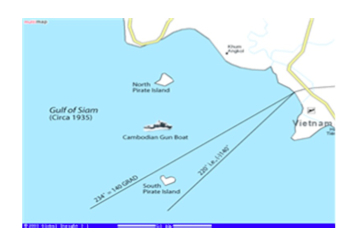
Gulf of Siam
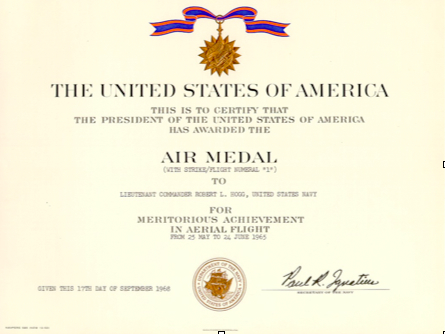
After my two year tour with VP-4 as Avionics and Quality Control officer billets, I was assigned to another interesting technical/engineering job. I was ordered to the Operational Test and Evaluation Force, Norfolk Test and Evaluation Detachment (NORVATEVDET). It was a great billet. However, the Executive Officer (XO) kept trying to run my evaluation assignments. He had no technical education and was more interested in getting evaluation results that would help his career. My first evaluation project was to evaluate the passive ECM (PECM) system in the RA-5C Vigilante recognizance aircraft. It was assigned to recognizance after it failed as a Nuclear Bomber. The bomb bay was between two large jet engines, when the linear bomb bay released the bomb, it tumbled. Bombing accuracy was unacceptable, so they installed a very good Panoramic Camera in the nose and a PECM System in the bomb bay. The Navy needed an up check on the PECM System Evaluation in order to buy 48 more RA-5c’s. They were stationed at NAS Sanford, FL. The XO accompanied me on a visit with the Commodore at Sanford. He pretty much promised him, a successful evaluation of the PECM System. Commencing on 29 November, 1966, I had Eglin AFB setup 10 simulated Russian Radars to test the PECM System’s capabilities. The RA-5C squadron was assigned to fly 10 missions against the simulated radars. Of the 10 flights, three aborted, one crashed at sea. The results from the remaining 6 missions were analyzed on their specially designed computing system. The results were that there were TV stations all over the Gulf of Mexico, but not a single Russian Radar was detected. I wrote up the results and recommended a negative evaluation of the PECM System. This didn’t make anyone happy, but I had the results to prove it. They canceled the 48 plane procurement. The remainder of the squadron deployed to Vietnam. Most were shot down by SAM’s. With no ECM protection, this should have been no surprise! There weren’t enough RA-5C’s left to justify a squadron. The squadron and base were soon de-commissioned. After that, I wasn’t too popular with the XO. His influence on the CO resulted in a down grading of my fitness reports. I had seven other projects at NORVATEVDET. They kept getting more and more complicated and computer orientated. I was the only one at OPTEVFOR OR NORVATEVDET with the computer experience required by the tasks. They kept requesting extensions on my two year tour assignment. My detailer at BuPers advised me to get out of there. BuPers even cut me a set of orders to the USS Wasp. OPTEVFOR insisted that I be extend for a third year, BuPers gave in. My last project was a huge one, the evaluation of a new ASW Command and Control System aboard the USS Wasp (CVS-18) with a Tactical Data System linking the USS Voge, (DE-1047) and USS Koelsch (DE-1049). The whole CIC of the Wasp had been computerized, with a grease board backup. The Voge and Koelsch were both new construction with the computers in their design. On 19 August 1968, I arrived at NAS Quonset Point to board the Wasp.
I was met by the two Univac programmers coming down the gang plank with their luggage. I asked them “Where do you think you are going.” They answered that they had finished de-bugging the computer program and had re-compiled it last night. They were going to leave a very complicated computer environment with no programming support aboard. I had the Officer of the Deck restrain them to the ship, until I could get their orders changed! I sent a priority message to OPTEVFOR advising them that if they didn’t get Univac to modify the programmer’s orders to remain aboard for the evaluation, that I would immediately put the evaluation in a “Deficiency Status” and return to Norfolk. They received new orders with 50% pay raises and arrangements for their wives to be at each of our “ports of call.” We got underway from Quonset. The System came to a complete halt before we passed under the Narragansett Bridge A computer data dump analysis determined the fault. Within an hour, it was fixed and we were an operable CIC again. By the time we docked in Glasgow, Scotland we had a rather long list of problems that needed fixed. I told the programmers, “They could go ashore when they had finish compiling the corrections. It took them about six hours, but we were full up ready to go when next we sailed. An embarrassing situation occurred about half way to Scotland. There was a Russian sub coming down past Iceland. The P3-B squadron at Keflavik had been tracking it. CNO sent a message that assigned tracking responsibility to the WASP. The position, course and speed of the sub were provided. The turnover was to be at a given time and location, which would be marked with #1 channel sonobuoy. I never had had much respect for the S2/S3A ability to track submarines. They were always in a noisy environment. What happened, was that they never found the sonobuoy, never made contact with the submarine and after three days, CNO re-assigned the tracking to the P3=B squadron. Within 30 minutes they had located it and had a solid track established! The sub had never deviated from its original course and speed. All they had to do was run a DRT extension from their original turnover point. CNO sent the most scathing message I had ever seen, to the CO of the WASP. It was apparent, that the days of the CVS Navy were nearly OVER!
After sailing from Glasgow, enroute to Naval Station Rota, Spain, the CDR promotion list came out. I had been passed over! It wasn’t much of a surprise or disappointment to me! After the less than perfect fitness reports that the XO had been submitting on me. Also, I had refused a “House Call by the CO” which was necessary for promotion. I had decided that I really wasn’t interested in the operational side of the Navy and would rather stay with the engineering jobs at a “working – get your hands dirty level” This had been my desire ever since I had left VP-8! So far it had worked out fine! Two days later I received orders to Vietnam as Deputy, Navy Research and Development Unit, Vietnam. I had requested a duty assignment in VP-4 after the time I had spent on Market Time in Saigon. My wish had come true! However, everyone else looked at it as a punishment assignment! Little did they know how happy I was! As it turned out, a CDR “Wick” Griffith, one of my six computer cohorts from the NPS was the Chief, NRDUV for the first six months of my tour. He was a great guy; I think he had a General MacArthur complex. He went around wearing Kiki shorts and smoking a “Corn Cobb Pipe”
I managed to bypass Survival School at Little Creek, since I had been through the one in San Diego on my way to VP-4. I therefore had an extra two weeks at home, before Xmas and my departure for Vietnam. I left Norfolk the day after Xmas. It was snowing heavily and the flight to Chicago had to detour to Fort Wayne. It didn’t look good for flying for the next two days, so a couple of sailors and I rented a car. I drove it to Chicago and caught a plane out to San Francisco the next morning. Got a flight from NAS Alameda to Travis AFB and then on to Saigon with World Airlines. We arrived at Ton Son Nhut, Saigon about 10:00 AM. Deplaned and dropped our draws at the bottom of the ladder, got golf ball size malaria shot in the buttock. I looked up at the blazing sun and said to myself “Good Morning Vietnam”, which was the daily opening announcement of the Armed Forces Radio station in Saigon!
We were loaded on a bus with heavily screened windows, a curiosity to the new arrivals. It was explained by a guy with a microphone, he might have been a tour guide from Hollywood! Upon arrival at an indoctrination center compound, we were informed that there would be a three day program to educate us about the customs and pre-cautions to observe during our tour. I wasn’t buying into this, so I informed them I had already had a three month acquaintance with Saigon, showed them my Vietnamese drivers license and named all the major streets. They were convinced and let me go! I called NRDUV and an International Scout vehicle picked me up twenty minutes later. The driver said that the scout was mine, so we drove back to NRDUV headquarters, in an old French compound. It was on the river at the end of Hai Ba Trung Street. Conveniently only one block from the center of town, what a location! I met the Chief, NRDUV, much to my surprise he was CDR Webster Griffith, one of my best friends from the NPS. He welcomed me aboard and provided me with my billet assignment. Billeting assignment was under control of MACV. Preferable assignments were by “time in country”. So mine was way out on the west side of Saigon in the Cholon, Chinese part of town in an old hotel named, “Hong Kong”. I was rooming with an Army 2nd LT and two Korean Officers that didn’t speak English but kept a big stinking gar of “Kimchi” in the ‘fridge’.
It was December 31, 1968; New Year’s Eve and I intended to spend it celebrating with my old friends at the “Kontiki” Restaurant. I changed into civilian sport shirt and pants and hurried out to my Scout. The Scout was parked about 500 feet from in front of the hotel. There were barricades and a guard post at the entrance to the hotel. As to the Scout, I passed an old four door green Army sedan. It was parked in front of my Scout. I got in the Scout and pulled out to drive past the hotel. No more than 10 seconds and 200 feet away and there was a huge explosion behind me and shrapnel was hitting the back of the Scout! I drove around the block and returned to ask the MP’s “What had happened?” They said that a chemically detonated “Limpet Magnetic Mine” had been placed under the sedan. It timed out and blew the sedan to smithereens. The damage to the Scout was minor, so I proceeded to the Kontiki. I realized that my tour in Vietnam had nearly been terminated by ten seconds, my thoughts “If this is the average day in Saigon, this was going to be quite a tour!” I got to the Kontiki at about 19:00, they had just opened and the four piece band was starting to play. There was a huge red and black Rooster constructed of cellophane pinned on the wall behind the stage, it was the Vietnamese “Year of the Cock – 1969” I thought, “What an odd sexual connotation that makes!”
I waited until, Dong Tien the band leader and old 1965 friend of mine, finished playing the piano. I asked him about all the old singers. He was amazed to learn that I was back in Saigon for a year and said that a favorite singer of mine hadn’t been singing with them for three years. However, by odd coincidence, she had called and asked to celebrate New Year’s with them! Once again, I couldn’t believe my good fortune of this day. I arrived on New Year’s Eve (a $5000 income tax break for 1956), skipped three day briefing missed getting killed by 10 seconds and now I would be able to spend the evening with old friends celebrating and singing all the old romantic songs of 1965. I sat in a dark corner of the club and ask Dong Tien to keep it a secret from my old friend that I was back! About half way through her first song, she saw me and stopped singing and gave me a big hung! Then she asks what I wanted to do for the remainder of the evening? Since there was a curfew in Saigon from 23:00 - 06:00, I said “Let’s lock the doors at 23:00 and everybody that wants to stay can! Then we will sing all the old songs from 1965!” She and the band agreed. That is the way it went, I was surprised that she was able to remember all the words to other fifty songs! She was very intelligent, she spoke five languages! Having lived in Saigon since she was born during the Japanese occupation in 1942, she knew all the history of the country and its leaders. Evenings conversing, were very interesting.
Next day I went to work, met the other three Officers and five enlisted shipmates. Then I reviewed the upcoming projects. I needed to be familiar as to progress and who were assigned to them. Looked at the list of projects scheduled to be pursued and choose the ones that I would take on! It was exciting to have such control. The only officer that out ranked me, was my friend CDR “Wick” Griffith. He was tied up daily reporting to COMNAVFORV briefings and handling all the official obligations with higher commands. I had the candy; he had all the duties that I abhorred; a perfect setup for me! There were many exciting projects. I had a letter signed by VADM Elmo R. Zumwalt, Jr. that authorized me to travel anywhere in South Vietnam, as needed for my projects. Air America would fly me anywhere I wanted to go! It served me well from the DMZ on the Cua Viet River (Mine Clearing Operation) to the south on the TiTi Canal, 15 miles up the Bazzac River from the South China Sea.
There were many (177) projects competed during the year. I had 44 of them. Two of my favorite projects were, a “Project Douche” which solved the mud & Nipa Palm log bunker problem by washing them out with high pressure water cannons. The second was a “Mining Mission on the TiTi Canal”. We used moored mines to deny Viet Cong logistical use of the canals at night. The mines were, MK-115A Destructors. They are mostly intended for use in shallow waters such as estuaries, against typical coastal targets. They can be employed with either aircraft or surface craft for use against surfacecraft for use against surface targets. I have encoded a story on each of these projects. Hope you find them interesting.
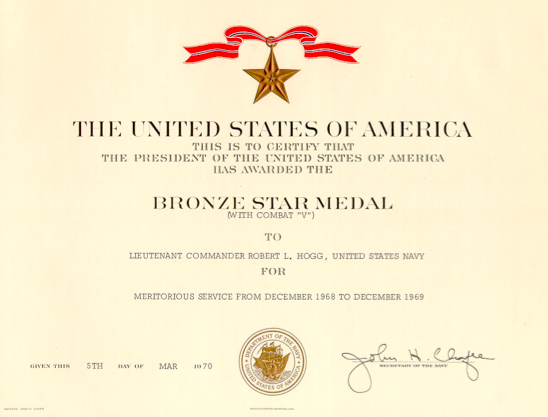
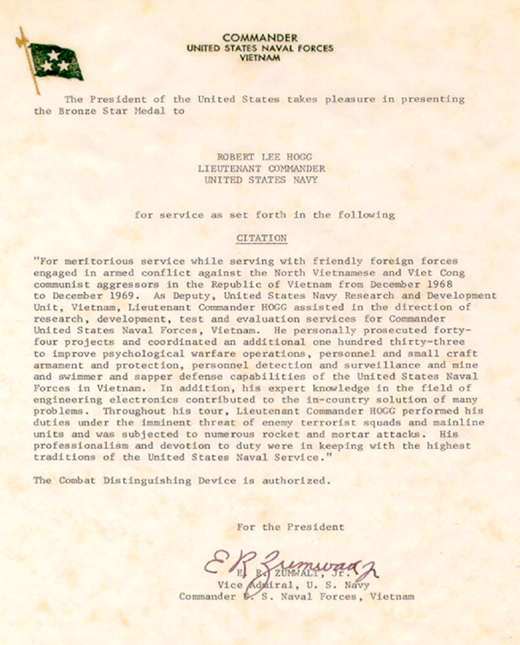
After leaving Saigon, I was assigned to NAVAIRSYSCOM in Washington, DC. It was then located on Constitution Avenue adjacent to the Reflection Pool. The Vietnam War Memorial Wall is in this area today. It was early January 1970. The Reflectsion Pool was frozen solid. I had parked on the only free near parking area, on Ohio Street by the Cherry Trees. Since the Reflection Pool was frozen over, I decided to take a short-cut, and walk across it. In the middle of the ice, a strong wind hit me and knocked me down. My briefcase hit so hard that it sprung open and all my orders, etc. went flying down the Reflection Pool. I am sure there were many laughs by those watching me in the back windows of the Navy Building. No one ever ribbed me about it! It is still a memorable entrance in my duty tour with the SYSCOM.
I had a great time at the NAVAIRSYSCOM. My fitness reports on the DVD can attest to that.
P-3C Orion Update “Pilot’s Introduction Manual”
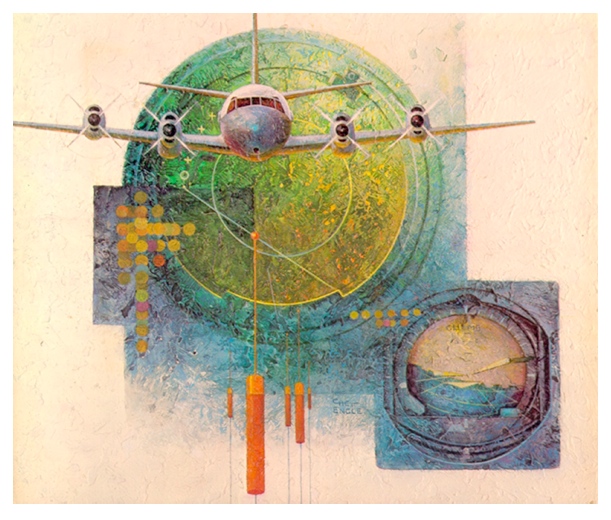
My final one year tour at the Naval Air Development Center (NADC) is again best described in my fitness reports on the DVD. The CO, RADM Grover M. Yowell, USN got to be a great friend. Upon his retirement, he moved to California. We frequently had lunch together. He bought several personal computers that I was manufacturing at the time. He died a couple years ago while having a heart valve replaced at. Scripps Research Institute, San Diego.
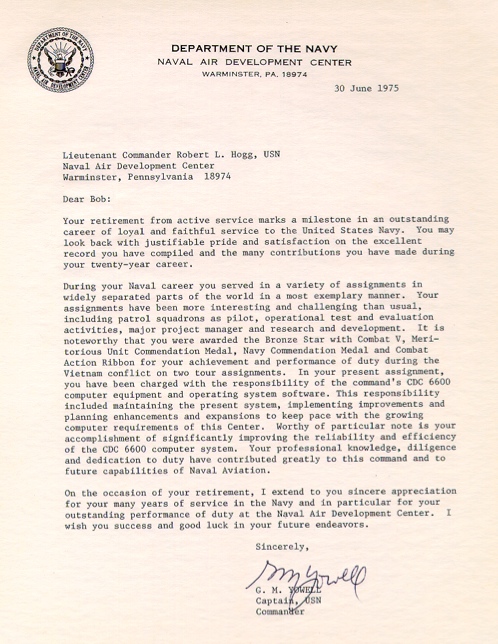
This has been a longer letter than I started out to write!. I had hoped to provide you with a little historical and colorful connection between VP-8 and BuNo 131410. It had a lot to do with the advancement of ASW and inspired me to pursue an unusual career. I thoroughly enjoyed my resulting assignments. I truly believe that if I had made CDR/USN, that I could not have gotten the duty assignments that followed my pass-over. I wouldn’t change it, if I had it all to do over! In a way, I owe it all to BuNo 131410. It got me into PGS and all that followed. Many times in Vietnam and afterward, I have had close calls on surviving. My Buddhist Vietnamese friends all said that I had the strongest “Karma” that they had ever seen! I think that the joining up of VP-8 and BuNo 131410 at NAS Jacksonville may be an extension of that “Karma”.
Sincerely,
Robert Lee Hogg LCDR/USN (retired)
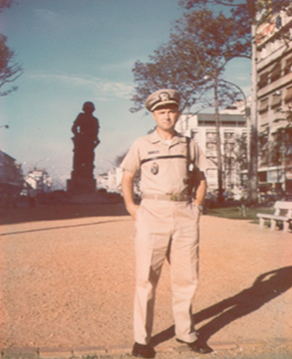
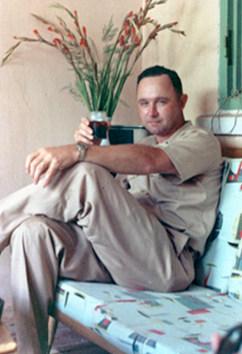
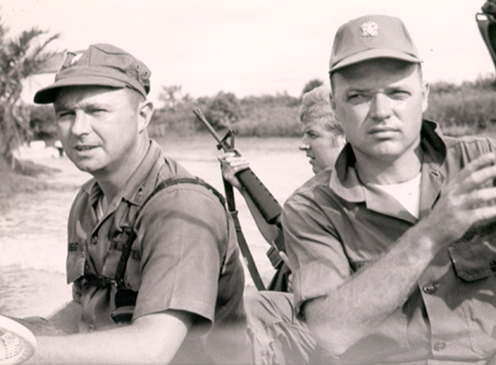
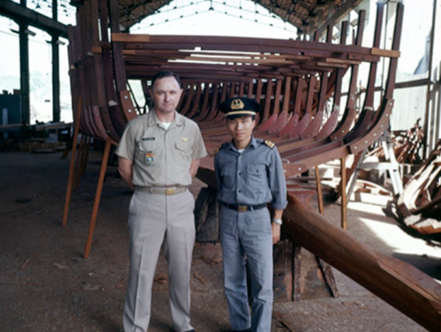
*****************************************************
This page updated on 5-27-11